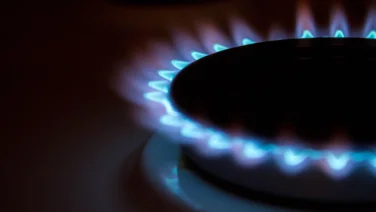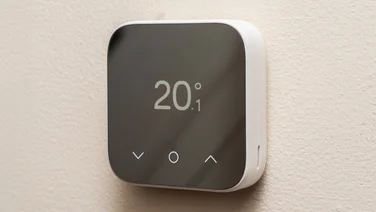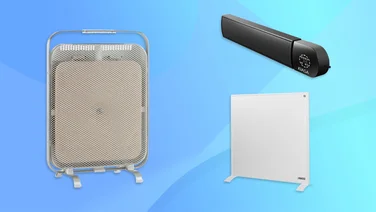To help us provide you with free impartial advice, we may earn a commission if you buy through links on our site. Learn more
- Get a free solar panel quote now
- How do solar panels work?
- How do solar panels generate electricity?
- Do solar panels need to be in direct sunlight?
- How do solar panels work with my electricity bill?
- How much do solar panels save on electricity bills?
- Do solar panels reduce gas bills, too?
- What happens if I generate less (or more) energy than I need?
- How are solar panels installed?
- Can I see how much electricity they're generating?

You’re not alone in wondering how solar panels work. With energy bills and environmental concerns at a peak, interest in solar panels is soaring: enquiries were more than eight times higher in 2022 than 2021, and 1.9 million UK households say they plan to install renewable energy sources in the coming year. Solar panels are an efficient and cost-effective option, but what makes them tick?
In this article we’ll offer some technical insight into how solar panels work, but we’ll also explain the logistical stuff that most potential buyers want to know. For example, how do solar panels work with your electricity bills? How much energy do they actually produce? And how are they installed?
Below, we’ll explore the ins and outs of buying, installing and running a system of solar panels for your home.
READ NEXT: The best solar panels to buy
Get a free solar panel quote now
If you’re looking for the best price on solar panels, take our quick survey below and we’ll provide a free quote based on your exact requirements.
How do solar panels work?
How do solar panels generate electricity?
Most modern solar panels are solar photovoltaic (PV) panels, which use semiconductor technology to convert light directly into electricity.
Each panel contains thin layers of semiconducting material, usually silicon. About 5% of PV panels use alternative compounds such as gallium arsenide and copper indium diselenide. Plastic PV is coming onto the market, too, but it’s currently not nearly as efficient as silicon at converting light to electricity. Sandwiching ther solar material in place are thick layers of glass, and a sealed frame usually made from aluminium. There are no moving parts.
The silicon material captures energy as direct current (DC) electricity, which you can’t use safely in your home, so it passes through an inverter that converts it to 240V alternating current (AC) that you can use to heat and power your kettle, washing machine and so on.
The inverter is a key part of a solar panel system (‘array’) and is usually positioned in your loft. Optional extra parts include remote monitors that let you measure and track the energy being captured, and batteries that let you store excess energy to use later. If you don’t have a battery, your provider sends any excess energy to the national grid for other people to use.
Do solar panels need to be in direct sunlight?
Ideally, yes. Solar panels do work on overcast and rainy days, which is just as well in the UK, but they’re much more efficient on bright days.
Interestingly, the heat of the sun doesn’t make much difference. Solar panels capture as much energy per hour in bright winter sunlight as they do in the summer, although of course you get fewer hours in winter.
This explains why the same solar panel can produce very different amounts of electricity depending on where you live, and why it’s so important to position your panels carefully. A single 300W solar panel (average for domestic use) on a 40° south-facing roof in Cornwall can produce up to 3kWh (kilowatt hours) of energy per day, but the same panel on a north-west-facing 35° roof in Aberdeen may produce less than half of that.
READ NEXT: Best direction for solar panels
How do solar panels work with my electricity bill?
Not a lot changes, except that your bills will fall dramatically. Your existing energy supplier will automatically take readings from your meter as normal. In the UK it’s not compulsory to tell your energy supplier that you’ve had solar panels installed. Your panels do need to be registered with your area’s DNO (distribution network operator), but in most cases your installer will do that.

That said, it is a good idea to tell your energy supplier about your panels. This is partly because some suppliers offer the SEG (Smart Export Guarantee), which can reduce your bills in return for any excess energy you send to the grid. It’s a very small reduction, though, and nowhere near the price you pay for electricity from the grid. Also, it’s worth telling your supplier about your panels so that they can reduce your fixed tariff.
You may find it makes sense so have your panels provided and installed by your existing energy supplier. UK energy providers that offer solar panel installations include Octopus Energy, our favourite energy supplier, as well as E.ON and EDF. Ovo Energy, another of our highest-rated energy suppliers, is planning to offer the service soon, and you can register your interest now.
Interested in finding out how much solar panels could cost you?
Find the best supplier for you
How much do solar panels save on electricity bills?
Solar panels can cut a huge 90% off your energy bills, and that proportion is growing as energy bills rise. The average solar panel installation can generate almost as much electricity as the average UK household uses, meaning that the electricity the panels produce is effectively free.
Modern domestic solar PV arrays typically comprise between six and 10 panels, and are rated between 1kWp and 4kWp. That stands for kilowatts peak (kWp), which refers to the maximum rate of electricity generated in peak conditions (say, on a south-facing roof on a sunny day in July).
Given decent conditions, a 4kWp solar PV system on an average-sized terraced house can produce around 2,850kWh of electricity in a year. That’s just a fraction less than the 2,900kWh the average UK household of 2.4 people uses in a year, according to Ofgem.
So if your usage is less than average, you could well end up paying nothing to your electricity supplier each month. It also means that an average £6,000 solar panel installation can pay for itself in a decade or less, and then give you free electricity for the remaining 15 years of its likely lifespan.
READ NEXT: How long do solar panels last?
Do solar panels reduce gas bills, too?
Not directly, because solar panels only produce electricity, but they can certainly help to cut your gas consumption. If you use the electricity they generate to run electric heaters, dehumidifiers and even energy-heavy electric showers, you’ll reduce your reliance on your boiler. Given that gas bills have shot up much faster than electric bills, that’d be a very cost-effective strategy, not to mention environmentally sustainable.
READ NEXT: Solar panel grants, explained
What happens if I generate less (or more) energy than I need?
Solar PV systems are connected to the national grid by default. If you use more electricity than your panels generate, then it’s imported from the national grid (just as it was before you had panels), and your energy supplier will charge you for it at the normal rate.
You won’t notice the difference between using your panel-generated electricity and using electricity from the grid, and you won’t even notice the transition. If your panels are correctly installed, your system will automatically switch over.
If your panels generate more electricity than you use, the excess is exported to the grid and you get a bit of money off your energy bills. But as mentioned, your discount is much smaller than the market cost of electricity, so it’s wise to either use what you produce or store it using a battery. Solar panel storage batteries can be quite expensive (around £3,000), but they’re still fairly new technology and the cost is coming down.
Any battery you install must be compatible with your solar panels and have the correct voltage. Your installer will be able to advise on the kind of battery that’s best for you.
READ NEXT: The best solar battery storage solutions
How are solar panels installed?
Installing a typical solar PV panel array is a fairly undisruptive job that takes about two days. Most of the work takes place outside. There will need to be some work in the loft or garage (where the inverter is usually located), and a 4mm cable needs to come into your house to be connected with the generation meter and consumer unit.
Solar panels won’t damage your roof, and they may even protect it over the 25 or so years of their lifespan. The installer will need to remove some tiles during installation, so that they can attach mounting brackets to your rafters, but they’ll put the tiles back, and should replace any damaged tiles. Rails are then attached to the brackets, and panels are attached to the rails. An electric cable from the array then goes under a roof tile, and is connected to the inverter.
You don’t need planning permission to have this done, unless you’re in a listed building, National Park or other protected area.
Once installed, you can expect the system to last for 25 years. The only part you’re likely to need to replace is the inverter (around £800 including installation) after 10-12 years.
Interested in finding out how much solar panels could cost you?
Find the best supplier for you
Can I see how much electricity they’re generating?
Most inverters have a display that reveals all sorts of information, including operational status (useful for checking if anything’s wrong) and how much electricity is being generated. The kWh reading on the display only shows the output for that particular hour, and this will change with the weather, sometimes quite quickly and dramatically. But it’s a useful and interesting insight.
If your inverter is installed in a hard-to-reach place like the far reaches of your loft, consider buying a solar energy monitor to keep a more convenient place. These cost around £75-£100, and don’t usually need specialist installation. You can even have your system connected remotely to your computer, so you can monitor your panels over time.






